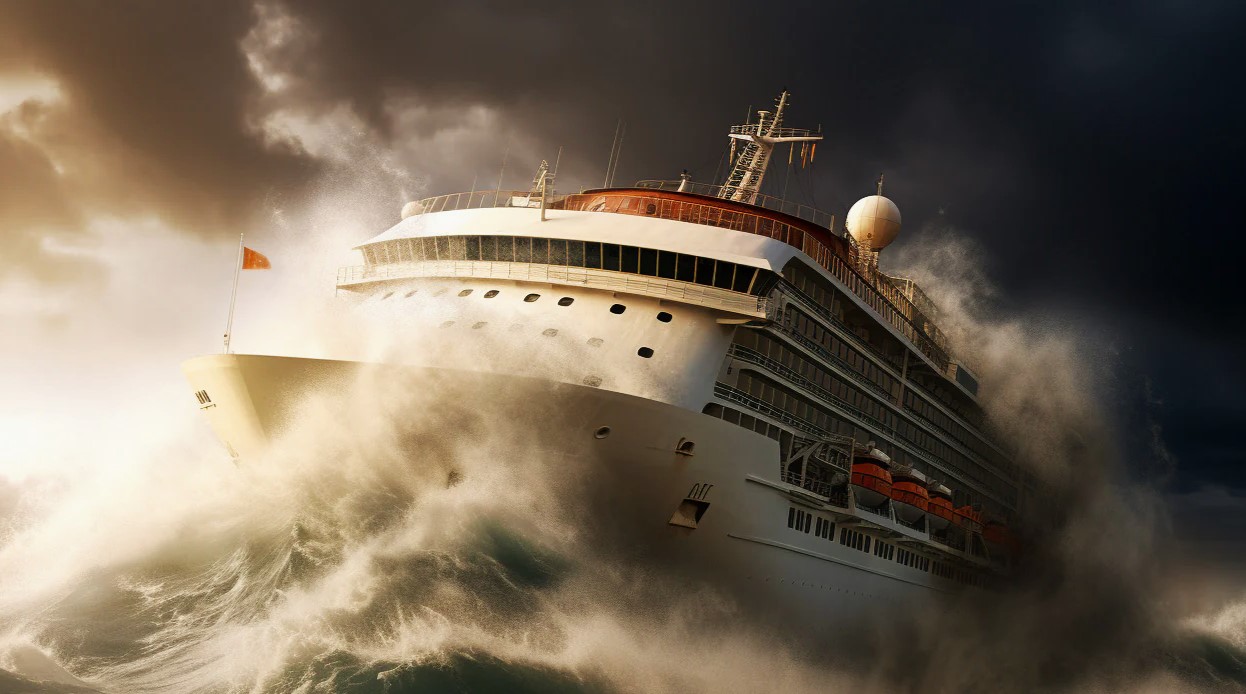How Large Of Waves Can A Cruise Ship Handle

Cruise ships are like floating cities, offering travelers a unique way to see the world. But what happens when these massive vessels encounter rough seas? Cruise ships are designed to handle large waves, but just how big can they be? Modern ships are built with advanced technology and engineering to withstand waves up to 50 feet high. These ships have stabilizers and other features to keep passengers safe and comfortable even in stormy conditions. While it's rare for a cruise to face such extreme weather, knowing the capabilities of these ships can provide peace of mind. Understanding how these vessels manage rough waters can make your next ocean adventure more enjoyable. Whether you're a seasoned cruiser or planning your first trip, knowing what to expect can enhance your travel experience.
Understanding Cruise Ship Stability
Cruise ships are marvels of engineering, designed to handle various sea conditions. But how large of waves can they actually manage? Let's explore the factors that contribute to their stability and safety.
- Ship Size and Design
The size and design of a cruise ship play a crucial role in its ability to handle waves. Larger ships with a broader beam (width) tend to be more stable. Their design often includes stabilizers, which are like underwater wings that help reduce rolling caused by waves.
- Hull Shape
The hull shape affects how a ship interacts with waves. A V-shaped hull can cut through waves more efficiently, while a flat-bottomed hull might ride over them. This design choice impacts how much a ship rolls or pitches in rough seas.
- Stabilizers
Modern cruise ships are equipped with stabilizers that extend from the sides of the ship. These devices help counteract the rolling motion caused by waves, making the ride smoother for passengers. They are especially useful in moderate to rough seas.
Weather Conditions and Wave Size
Weather conditions greatly influence wave size, and cruise ships must be prepared to handle different scenarios. Understanding these conditions helps in assessing a ship's capability.
- Wind Speed and Direction
Wind is a major factor in wave formation. Strong winds can create larger waves, which can impact a ship's stability. Cruise ships are equipped with advanced weather monitoring systems to anticipate and navigate around severe weather.
- Ocean Currents
Ocean currents can also affect wave size. Ships often adjust their routes to avoid areas with strong currents that could lead to larger waves. This proactive approach helps ensure passenger safety and comfort.
- Storms and Hurricanes
Cruise ships are built to withstand storms, but they typically avoid sailing directly into hurricanes. These massive storms can produce waves over 50 feet high. Ships will alter their course to steer clear of such dangerous conditions.
Real-Life Examples of Wave Encounters
Real-life scenarios provide insight into how cruise ships handle large waves. These examples highlight the resilience and adaptability of these vessels.
- North Atlantic Crossings
The North Atlantic is known for its rough seas, especially during winter. Cruise ships crossing this region often encounter waves up to 30 feet high. Thanks to their design and technology, they can navigate these challenging waters safely.
- Pacific Ocean Journeys
The Pacific Ocean can also present large waves, particularly during stormy weather. Cruise ships traveling this route are prepared for waves that can reach 40 feet. Their robust construction ensures they can handle these conditions.
- Mediterranean Adventures
While the Mediterranean Sea is generally calmer, it can still produce significant waves during storms. Cruise ships in this region are designed to manage waves up to 20 feet, ensuring a smooth journey for passengers.
Safety Measures and Passenger Comfort
Safety and comfort are top priorities for cruise lines. Various measures are in place to ensure passengers feel secure even in rough seas.
- Advanced Navigation Systems
Cruise ships use state-of-the-art navigation systems to chart the safest course. These systems help avoid areas with large waves, ensuring a smoother journey.
- Crew Training
The crew undergoes rigorous training to handle emergencies and maintain passenger safety. They are well-prepared to manage situations involving large waves, providing reassurance to those on board.
- Passenger Communication
Clear communication with passengers is vital during rough seas. Cruise lines keep travelers informed about weather conditions and any changes to the itinerary, helping to ease concerns.
Understanding how cruise ships handle large waves highlights the impressive engineering and safety measures in place. These vessels are designed to provide a safe and comfortable experience, even when the seas get rough.
Understanding Cruise Ship Wave Handling
Cruise ships are built to handle large waves, ensuring passenger safety and comfort. Modern engineering allows these vessels to withstand waves up to 50 feet, though such conditions are rare. Stabilizers and advanced navigation systems help maintain balance, reducing the impact of rough seas. Crew members are trained to manage challenging weather, ensuring smooth sailing even when conditions get tough. While the thought of encountering massive waves might seem daunting, cruise lines prioritize safety, constantly monitoring weather patterns and adjusting routes as needed. Passengers can feel confident knowing these ships are designed for stability and resilience. Next time you board a cruise, remember the technology and expertise behind the scenes, keeping your journey safe and enjoyable. Whether you're exploring the Caribbean or the Mediterranean, rest assured that your cruise ship is well-equipped to handle whatever the ocean brings.

